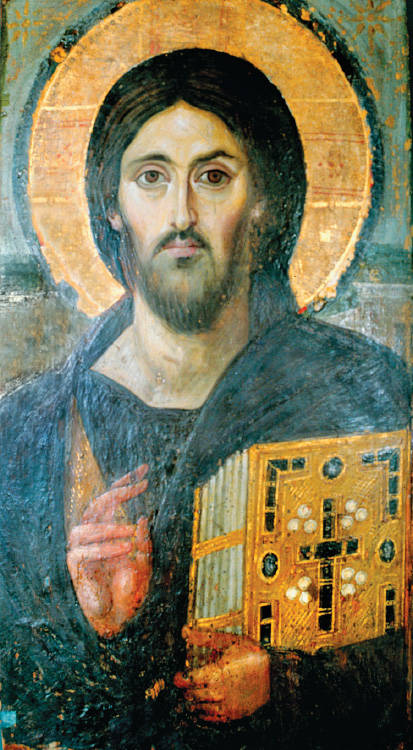Visual Source 10.1
Christ Pantokrator
Visual Source 10.1, among the oldest icons in existence, dates from the sixth century and survived the destruction of icons during the century of iconoclasm. In contrast to many images of the suffering Jesus on the cross, this icon belongs to a tradition of icon painting that depicts Jesus as Christ Pantokrator, a Greek term translated as “Almighty,” “Ruler of All,” or “Sustainer of the World.” Wearing a dark purple robe and surrounded by a halo of light, Jesus holds a copy of the gospels in his left hand. Notice that Jesus’ right hand is raised in blessing with the three fingers together representing the trinity and the two remaining fingers symbolizing the dual nature of Christ, both human and divine. Many observers have suggested that this important theological statement of Christ’s divine and human nature is also conveyed in the asymmetrical character of the image.

Question
What differences can you notice in the two sides of Christ’s face? (Pay attention to the eyebrows, the irises and pupils, the hair, the mustache, and the cheeks. Notice also the difference in color between the face and the hands.)
Question
How does this image portray Jesus as an all-powerful ruler?
Question
How does this depiction of Jesus differ from others you may have seen?
Question
Which features of this image suggest Christ’s humanity and which might portray his divinity?